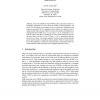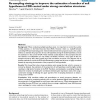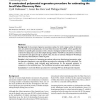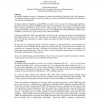15 search results - page 1 / 3 » Step-Down FDR Procedures for Large Numbers of Hypotheses |
PARA
2004
Springer
13 years 10 months ago
2004
Springer
BMCBI
2007
13 years 5 months ago
2007
Background: When conducting multiple hypothesis tests, it is important to control the number of false positives, or the False Discovery Rate (FDR). However, there is a tradeoff be...
BMCBI
2007
13 years 4 months ago
2007
Background: In the context of genomic association studies, for which a large number of statistical tests are performed simultaneously, the local False Discovery Rate (lFDR), which...
BMCBI
2008
13 years 4 months ago
2008
Background: We consider effects of dependence among variables of high-dimensional data in multiple hypothesis testing problems, in particular the False Discovery Rate (FDR) contro...
CSDA
2008
13 years 4 months ago
2008
In multiple hypotheses testing, it is important to control the probability of rejecting "true" null hypotheses. A standard procedure has been to control the family-wise ...




